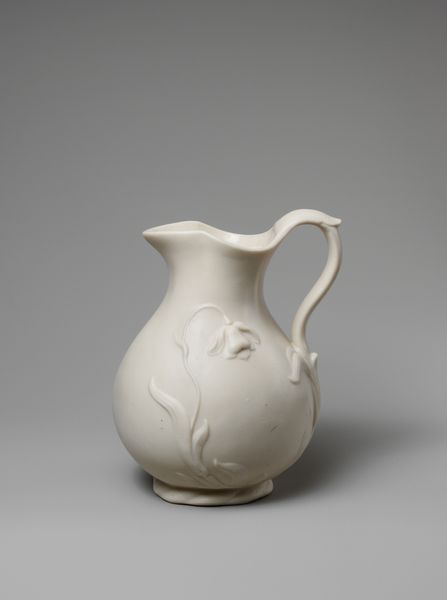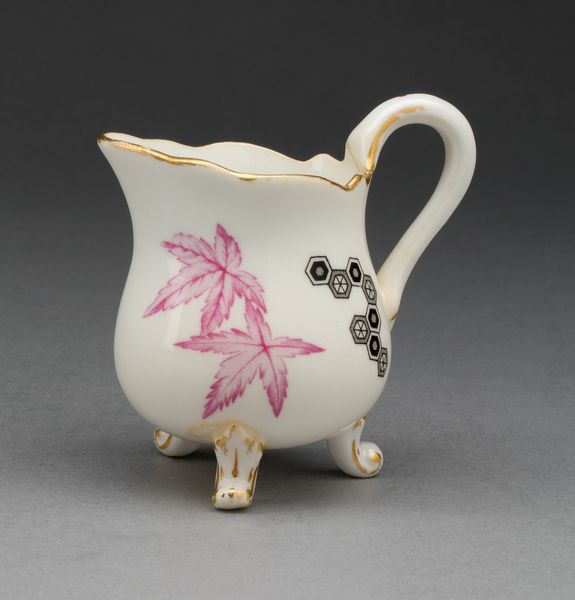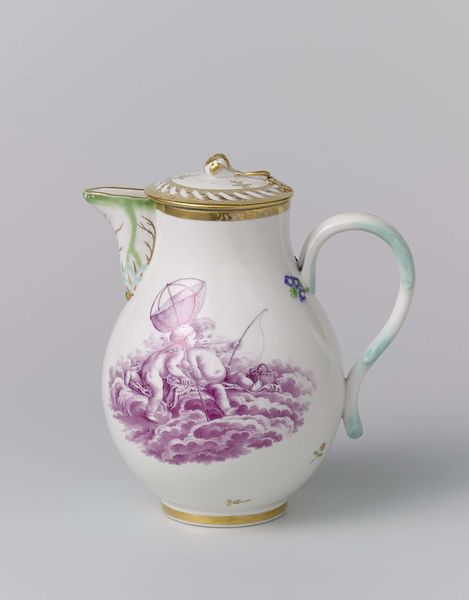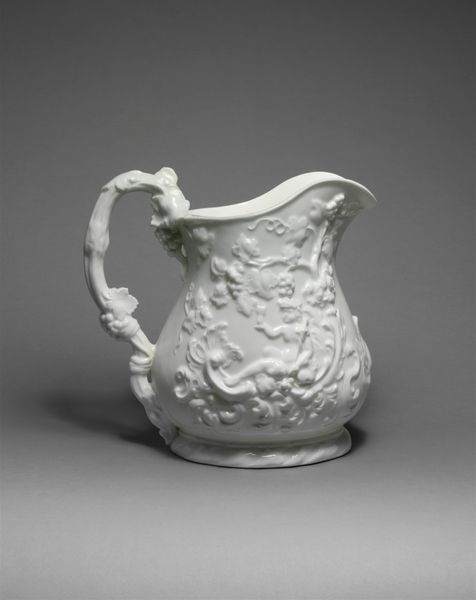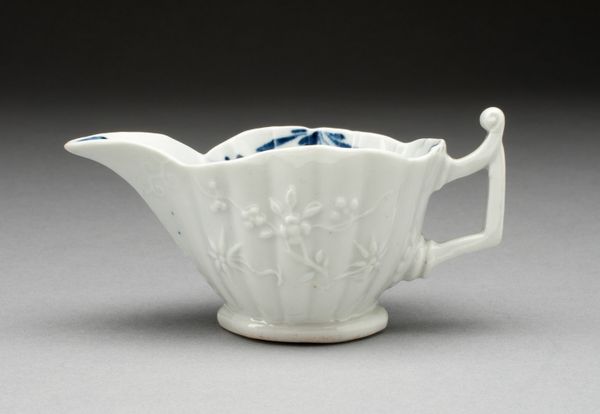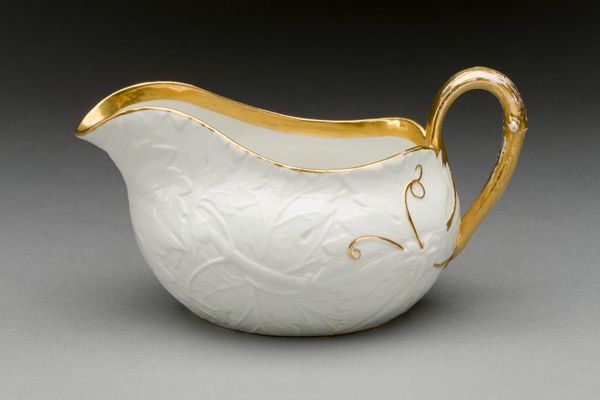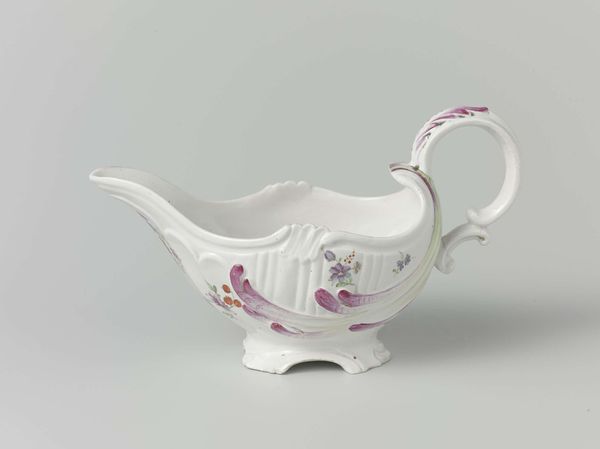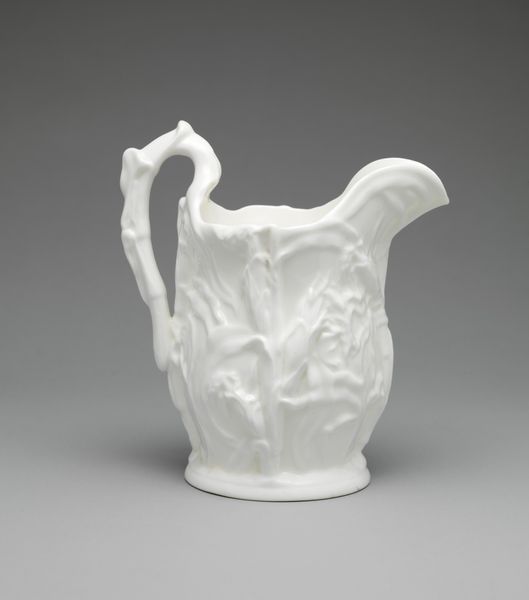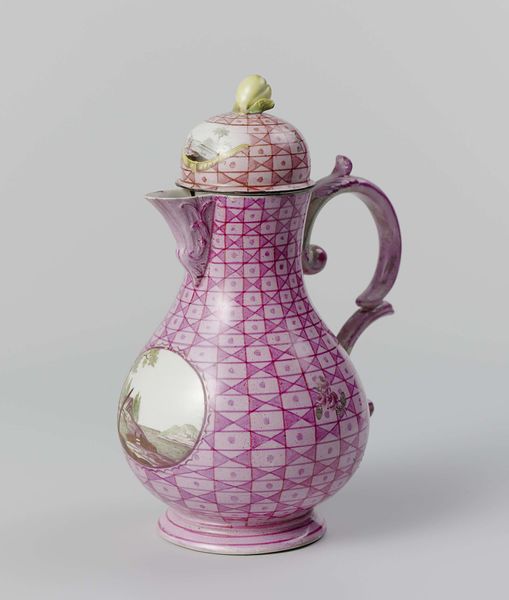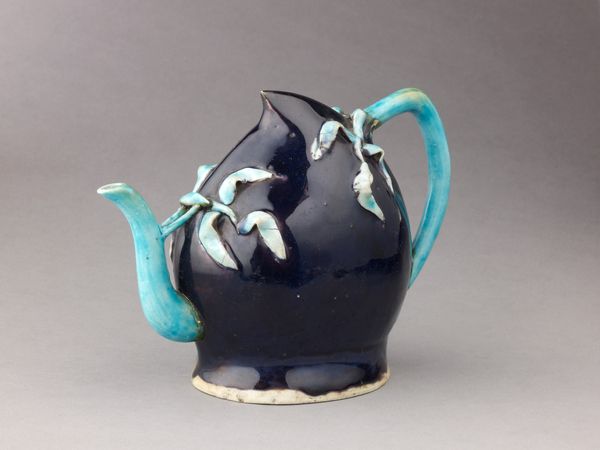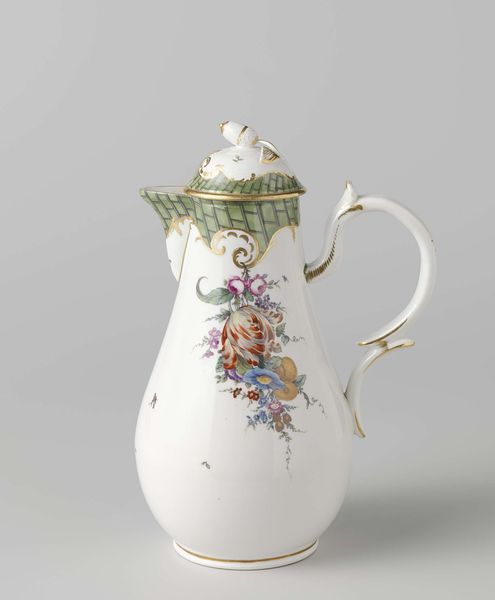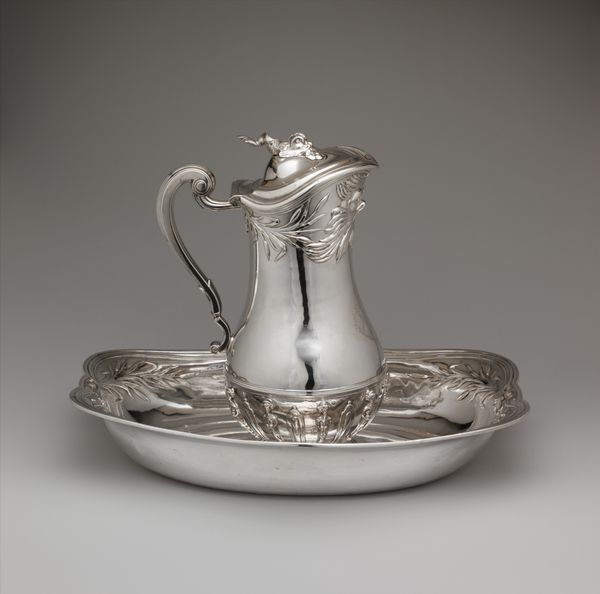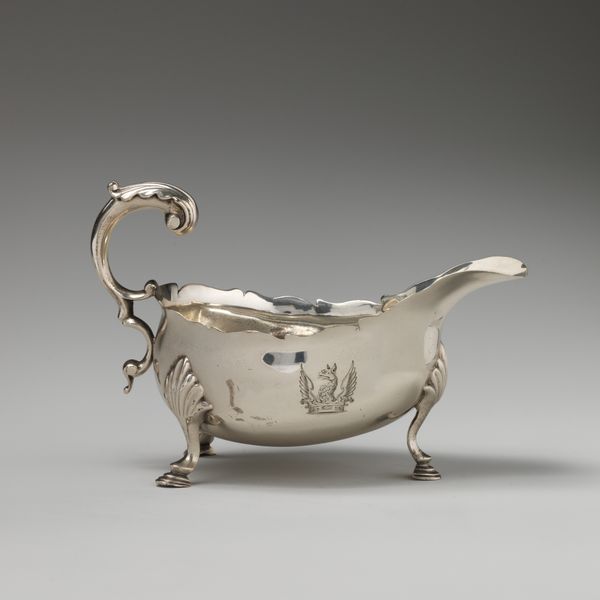
ceramic, glass
#
ceramic
#
glass
#
decorative-art
Dimensions: H. 4 3/8 in. (11.1 cm); Diam. 4 3/4 in. (12.1 cm)
Copyright: Public Domain
Curator: What strikes me immediately about this glass cream pitcher is its subtle transition of color. It is very Victorian, somehow melancholic. Editor: Indeed, and we find this piece currently housed at the Metropolitan Museum of Art. Made by the Challinor, Taylor and Company sometime between 1875 and 1890, its existence tells us much about industrial practices during that period. Curator: What visuals stand out most for you regarding that time period? Editor: I find the layering of opaque glass to achieve such vibrant coloring incredibly interesting, given the social climate of mass-produced decorative art that was so heavily traded. The patterning has specific significance to the consumerism in that era. Curator: Oh, absolutely. Note the botanical imagery—the daisy-like flowers near the top and the suggestion of stylized leaves near the bottom, framing a lattice of circles and squares, this reflects a wider cultural obsession. What would this consumer’s symbolism have held for its owner, I wonder? Editor: Floral motifs symbolize domesticity, comfort, the romanticism with which people treated their homes. It’s all tied to identity, particularly that of women during the Victorian era. Curator: Considering all this, does the pitcher invite us to question divisions between art and craft, challenging the definition of "high art"? Editor: Undoubtedly. We see an example of function and decor blurring into what can now be admired as art, even though its primary intent was practical and part of an expanding market that redefined daily life. Curator: I’m walking away now thinking about material, culture, identity, labor… Editor: Agreed, reflecting on how an everyday object holds so many threads of history and intention adds depth to the appreciation.
Comments
No comments
Be the first to comment and join the conversation on the ultimate creative platform.
